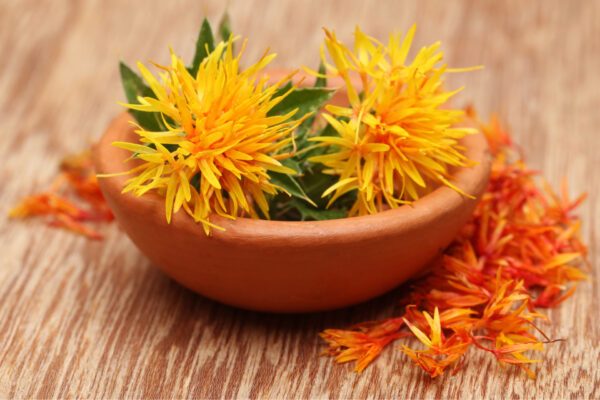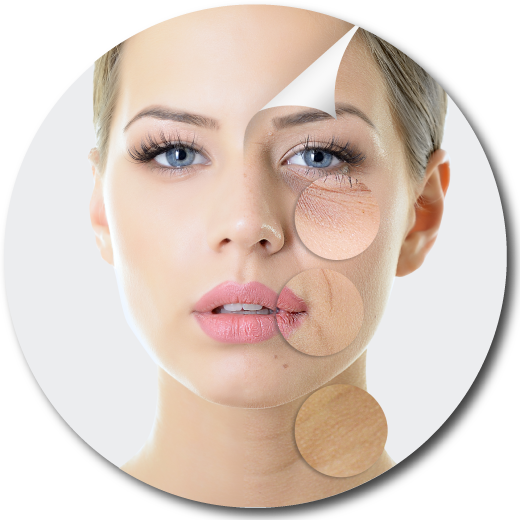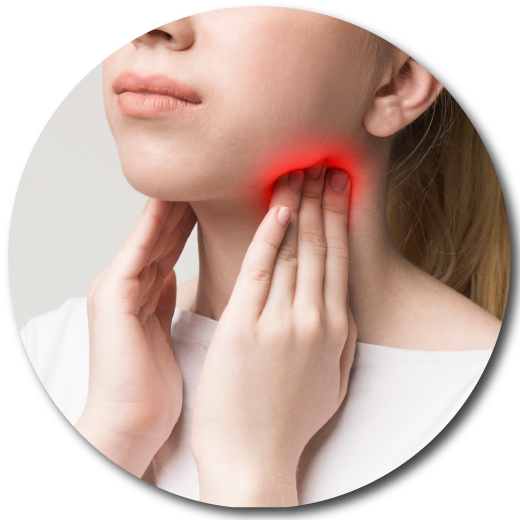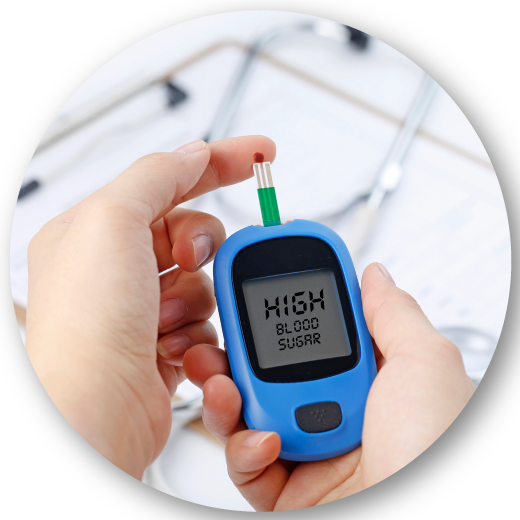Safflower Extract
Carthamus tinctorius L. is the scientific name for safflower (Safflower). Sweet, spicy, and somewhat bitter blooms and stamens Safflower originated in Mediterranean areas. It is cultivated in Thailand’s northern area. According to Thai medical writings, safflower was used to nourish the nerves, the heart, and the blood. Treat colds, arthritis, and edema It is also a traditional home treatment and can be used as a laxative. There are several chemical components in safflower, including:
-
Flavonoids such as Quinochalcones, Glycosides, Kaempferol and Saffloquinoside
-
Alkaloids such as Feruloylserotonin, Feruloyltryptamine, and Serotonin
-
Fatty acids such as Linolic acid, Oleic acid, Palmitic acid, and Stearic acid results in various effects such as antioxidants (Anti-oxidation), anti-inflammatory (Anti-inflammatory), and anticoagulation.
(Anti-coagulant) safeguards the heart and blood arteries. (Cardiovascular protection) aids in the maintenance of blood sugar levels. Anti-diabetes Mellitus medication inhibits bacteria. (Anti-microbial) protects the liver from poisons. (Hepatoprotective) and can also prevent bacterial development. Fungi such as Candida albicans, Rhodotorula rubra, Aspergillus fumigatus, Aspergillus niger, and Penicillium expansum are inhibited by anti-bacterial bacteria such as Sacillus subtilis, Bacillus cereus, and Bacillus mycoides.


The Use of Safflower Extract in the Cosmetic Industry
Safflower’s anti-inflammatory action (Anti-inflammatory) was shown to alter Pro-inflammatory cytokines such as Tumor necrosis factor (TNF-) and Interleukin (IL)-1b, which are high in Flavonoids and hence have antioxidant activity. (Anti-oxidation) Safflower oil contains linoleic acid and omega fatty acids, which help the skin maintain moisture. Increases flexibility and smoothness, and may be used in a wide range of cosmetic products. It is commonly found in hair and skin care products.
Safflower extract’s use in the food supplement sector (Supplement Industries)
have an antioxidant action (anti-oxidation), thereby aiding in free radical-related symptoms such as irregular lump development Alzheimer’s disease, Parkinson’s disease, and ageing are all examples of degenerative diseases. Safflower oil is high in linoleic acid, which aids in the anti-inflammatory process in rheumatism and increases calcium absorption. It also helps to nourish the nerves, encourage the enlargement of blood vessels, and improve blood flow (Anti-coagulant).
Properties of Safflower Extract

Anti-aging
Restore skin health, reduce wrinkles, slow down the skin to look younger.

Anti-inflammatory
Pain relief anti-inflammatory.

Immunity
Strengthen the immune system of the body.

Anti-diabetes
Lowering blood sugar levels for diabetics.
Research on safflower extracts should be encouraged.
Currently, safflower extract formulations and products are being created to improve the stability of extracts or the development of raw material sources extraction process and the process of generating products that are stable and boost the efficiency of active components. In the development of research and natural extracts, TIBD now collaborates with major research institutes both locally and abroad, such as Japan and Brazil. However, if you are interested in co-investing in the form of research development, commercial patent development, or continuing to make product formulae under your brand, you may contact the firm through any method.
Reference
Delshad, E., Yousefi, M., Sasannezhad, P., Rakhshandeh, H., & Ayati, Z. (2018). Medical uses of Carthamus tinctorius L.(Safflower): a comprehensive review from traditional medicine to modern medicine. Electronic physician, 10 (4), 6672.
Zhang, L. L., Tian, K., Tang, Z. H., Chen, X. J., Bian, Z. X., Wang, Y. T., & Lu, J. J. (2016). Phytochemistry and Pharmacology of Carthamus tinctorius L. The American journal of Chinese medicine, 44(02), 197-226.
Asgarpanah, J., & Kazemivash, N. (2013). Phytochemistry, pharmacology and medicinal properties of Carthamus tinctorius L. Chinese journal of integrative medicine, 19(2), 153-159.
Zhou, X., Tang, L., Xu, Y., Zhou, G., & Wang, Z. (2014). Towards a better understanding of medicinal uses of Carthamus tinctorius L. in traditional Chinese medicine: a phytochemical and pharmacological review. Journal of ethnopharmacology, 151(1), 27-43.


